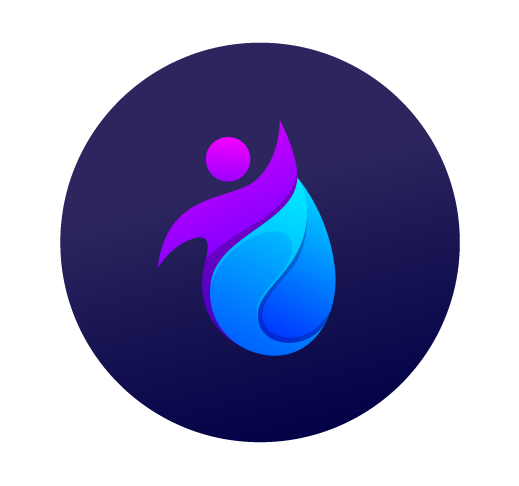Reaching your career goals means presenting your work in a way recruiters easily grasp. A compelling professional portfolio can open interview doors and move your job search forward.
The job market rewards candidates who show—not just tell—their strengths and successes. A thoughtfully assembled professional portfolio sends a clear, confident signal to every recruiter who reviews it.
Explore this guide to discover practical steps, real examples, and strategies that will make your professional portfolio a tool recruiters can trust immediately.
Choosing the Right Pieces for Results-Driven Portfolios
Your final portfolio selection should make a recruiter say, “I can picture them working here.” Every inclusion should support the job you’re targeting.
Aligning your professional portfolio with the exact role means anticipating what hiring managers want to see—results, not just tasks. Consider which samples show skills, outcomes, and initiative.
Selecting Work That Speaks Their Language
Review the job description and highlight required skills. Match your portfolio samples to those skills using language the employer uses, not just your former titles or jargon.
For example, if a job expects “project management,” include documentation or visuals from a project you led, labeling it to reflect that responsibility.
Always connect achievements to measurable impacts. Instead of listing “created reports,” note “analyzed market data to boost campaign ROI by 10%,” and display the relevant report sample.
Sequencing for Fast Recruiter Scans
Recruiters often skim in seconds, so lead with your strongest accomplishment first in your professional portfolio. Start each section with a one-sentence headline outcome above the sample.
Group similar samples together and include a quick summary at the top—“Selected digital campaigns: 2022-2024”—so readers instantly know what they’ll see.
Balance visual and written samples so every viewer type finds what holds their attention, and keep each section concise and tailored.
| Portfolio Item | What It Shows | Why It Works | What To Do Next |
|---|---|---|---|
| Project Plan PDF | Project Management | Highlights planning and leadership | Summarize one achievement on the opener page |
| Case Study Slide | Problem-Solving | Shows the process and measurable results | Use bullet points for goals and outcomes |
| Marketing Campaign Image | Creativity | Demonstrates branding skills visually | Add a caption with key results |
| Code Snippet | Technical Skills | Reveals how you solve challenges | Comment your code for clarity |
| Recommendation Excerpt | Collaboration | Shows feedback from a peer or manager | Highlight a specific attribute you want to reinforce |
Structuring Your Portfolio for Immediate Clarity
The best portfolios let recruiters find what matters without confusion. Build sections around job-relevant themes and provide an easy navigation path within your professional portfolio.
Segment materials by skill or achievement type to avoid overwhelming readers. Include short overviews that guide them to significant samples and keep each file labeled clearly.
Creating Accessible Digital Folders
Label folders based on the function: “Project Management,” “Visual Design,” “Research,” and similar. Link samples as PDFs or JPEGs, never as cluttered zip files or text-only docs.
- Use clear, action-first folder names (Design Results, Leadership Samples) to show intent and direct attention from the start.
- Group no more than five work samples per section to avoid decision fatigue and make each item shine through on its own merits.
- Include a single-page introduction to each folder. State what’s inside and what specific job skill or result each item demonstrates with practical relevance.
- Show diversity in style and content, not just quantity. This approach reassures recruiters that your professional portfolio isn’t padded with filler or unrelated work.
- Add skip links or a clickable table of contents for digital portfolios, helping busy reviewers jump to sections they care about most in seconds.
A professional portfolio with thoughtfully organized folders keeps your career story easy to follow and puts your skills upfront.
Highlighting Your Unique Value
Start each major section with a concise results-based summary such as, “These projects improved workflow efficiency by 18%.”
- Draft your headline before adding samples. Headlines act as signposts that draw recruiter interest and communicate your brand at a glance.
- Use only data or examples relevant to the job—irrelevant wins dilute your professional focus and confuse the story you want to tell.
- Write a summary for each project in the first sentence, linking it to a job requirement: “Increased client engagement by 30% using automated email workflows.”
- Pair visuals with results-driven bullet lists so even non-experts grasp your achievements from a brief review.
- Always add a call to action such as, “See attached video demo,” to move the reader on to the next impactful piece of your portfolio.
Giving each section a measurable, tailored intro makes your professional portfolio memorable and relevant to every recruiter who opens it.
Demonstrating Growth and Learning With Real Stories
Portfolios that show growth help recruiters see you as adaptable. Include examples organized chronologically to illustrate how you learned and contributed in each role.
Arrange your professional portfolio to show skill progression: early work, process changes, and final outcomes for each project included.
Chronological Project Narratives
Use a simple before-and-after structure, such as: “Improved quarterly reporting—old method versus new workflow and the efficiency gained.” Point out measurable improvements at each transition.
A short, narrative approach demonstrates why your professional portfolio matters to the employer, not just what you accomplished.
Include captions on every significant item: “This dashboard increased monthly efficiency by 20% after implementation.” State clear numbers when possible.
Expanding on Feedback Integration
Show how you used feedback to improve results. Attach a sample with two versions—before and after peer review, with annotations.
Cap each story with a line recruiters can use, such as, “Acted on team feedback to redesign process and reduce delivery time by 25%.”
Build your professional portfolio’s credibility through evidence of responding and adapting—a trait employers value deeply in modern teams.
Presenting Technical and Soft Skills Side-by-Side
Recruiters look for candidates who balance technical strengths with communication, leadership, and problem-solving. Display both skill types throughout your professional portfolio.
Pairing a technical achievement with a human interaction, such as leading a team meeting or training session, rounds out your professional story.
Integrating Soft Skills With Performance Metrics
Display a project’s output next to a short testimonial or peer review. This signals both impact and interpersonal ability without making recruiters hunt for context.
“Led cross-functional team to deliver product on schedule, with peers citing clear communication as a project highlight.” Tie numbers and quotes together for a bigger effect.
Repeat this pattern for every relevant section, letting each item earn its place in your professional portfolio.
Balancing Hard Examples and Leadership Experiences
Lead with a technical or creative sample—such as code, designs, or analytics results—followed directly by an example of you mentoring or supporting other team members.
For instance, after a dashboard screenshot, attach a brief email from a team member about your help troubleshooting an urgent issue.
This balance of evidence shows your professional portfolio covers more than skill sets: it proves you bring value to the entire workplace culture.
Leveraging Modern Tools for Standout Digital Portfolios
Taking advantage of portfolio builders, cloud sharing, and multimedia integration makes your work more accessible and engaging for recruiters on all devices.
Use password-protected links or presentation platforms that allow for comments and feedback directly on work samples.
Showcasing Multimedia Content Effectively
Upload videos, narrated screencasts, or interactive dashboards, especially if your field benefits from dynamic demonstrations. Link each to a short explanation about what recruiters should notice.
For example, “See the two-minute demo of this interface in action. Key features address the problem listed in the job posting.”
Always optimize file sizes and compatibility so busy hiring teams aren’t slowed down by technical delays or download requests.
Maintaining Version Control and Access
Date-stamp portfolio items and include version histories for ongoing or evolving projects. Use a clear naming system, such as “2024_Q1_Campaign_Final.”
If responding to job postings directly, host a custom version of your professional portfolio for each target audience.
Email a recruiter-friendly summary with links to the relevant sections, ensuring immediate access while showcasing your attention to detail.
Refining and Customizing for Every Job Application
Each opportunity deserves a tailored presentation—never send the same professional portfolio to every recruiter. Use the job listing as a guide for edits.
Cut irrelevant samples, add context for niche requirements, and reorder pieces to show direct alignment with the current organization’s goals.
Editing for Focus and Relevance
After reviewing the job description, remove anything that doesn’t answer a stated need or support a listed value. Less is more when it focuses recruiter attention.
Update section headlines and project summaries to mirror key phrases from the posting—this both passes automated screens and resonates with human reviewers.
Prioritize clarity and brevity; ensure every headline and caption points directly to a qualification the employer values.
Embedding Keyword Matching for Recruiter Software
Include terms from the posting naturally within your project intros—this increases the chance your professional portfolio passes ATS filters and reaches a recruiter’s desk.
Always check your summary language for clarity. Instead of technical jargon, explain outcomes in plain English: “Reduced onboarding time,” “Streamlined reporting,” or “Improved client retention.”
Send each version as a unique access link or PDF, and always double-check that page navigation and all links work correctly before submitting.
Pulling It Together: Evolving Your Winning Portfolio Strategy
A focused, results-driven professional portfolio helps you connect with the right job faster by proving your skills through work samples and project evidence.
The more you align your portfolio with specific job needs, the more likely you are to reach decision-makers and land interviews for roles you truly want.
Consistently update your professional portfolio as your career grows, making every submission an accurate snapshot of your unique value and adaptability in the job market.



